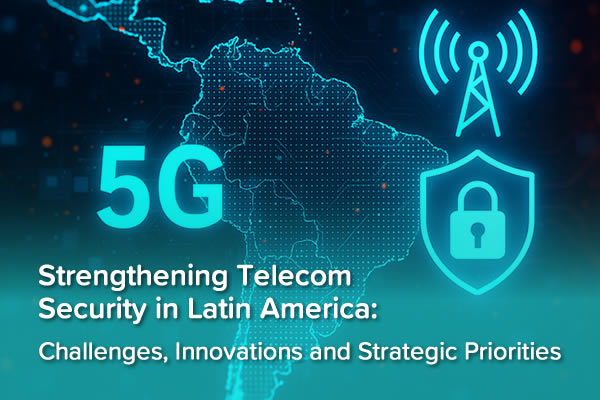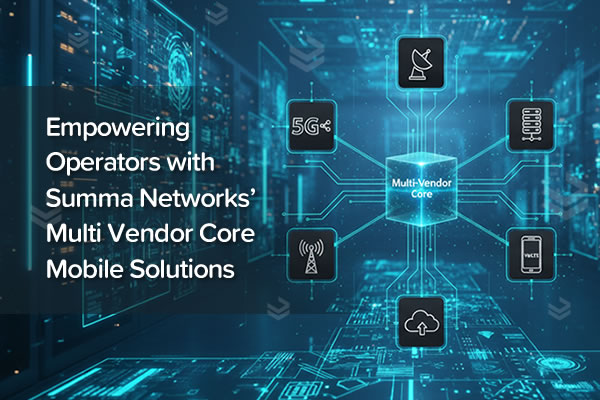The latest news and insights

Strengthening Telecom Security in Latin America: Challenges, Innovations and Strategic Priorities
Introduction
As the telecom industry in Latin America undergoes a major shift toward 5G, the issue of cybersecurity has never been more urgent. According to GSMA Intelligence's June 2024 report, operators in the region are facing increasingly complex threats, from ransomware and phishing to sophisticated signaling and interconnect attacks. In parallel, the region is dealing with low 5G adoption rates (below 10% overall) and infrastructure modernization challenges, making it vital to integrate security into every step of the network evolution process.
A Changing Threat Landscape
Telecoms are no strangers to digital threats, but the combination of software-defined networks, increased digitization, and the rise of AI has drastically expanded the attack surface. Latin American operators report heightened risk levels across mobile networks, cloud infrastructure, edge computing, IoT devices, and especially end-user mobile devices. Key threats include:
- Ransomware and phishing/smishing as top network threats
- SIM swap fraud and spam/fraudulent voice calls, with Brazil and Mexico being most affected
- Attacks on virtualized infrastructure and human error, cited as growing concerns
Current Readiness and Confidence Levels
While 75% of operators in Latin America rate their mobile network defenses as "strong or very strong," only 25% feel truly confident. Readiness is notably lower in areas like cloud infrastructure and IoT. This gap highlights a pressing need for:
- Better threat intelligence sharing
- Investment in AI-driven security solutions
- Cross-functional training and board-level engagement on cybersecurity
Security Strategies and Innovations
To strengthen defenses, leading telcos are implementing a range of measures:
- Secure-by-design architectures integrated from the network planning stage
- Segmentation of internal vs. external services (technology segregation)
- Configuration hardening and regular patching
- Network-based security services like DDoS protection and signaling firewalls
- Voice and SMS firewalls, AI-driven fraud prevention tools, and Open Gateway APIs (e.g., SIM Swap, Number Verify, Device Location)
The Human Factor and Business Controls
Cybersecurity isn’t only a technical issue – human risk remains a major factor. Many telcos have implemented "least privilege" policies, staff vetting, and cybersecurity training (with >85% of employees trained at companies like America Móvil, Telefónica and Entel). Business continuity plans, alignment with ISO 27001, and the establishment of dedicated CISOs reporting to top management are becoming the norm.
Looking Ahead: A Call for Collaboration and Preparedness
Security in telecom is no longer a siloed concern. It requires collaboration across mobile operators, vendors, regulators, and consumers. Initiatives like GSMA’s T-ISAC and the Mobile Cybersecurity Knowledge Base foster threat intelligence sharing and collective action. As the region accelerates toward 5G Standalone, securing every layer of the telecom ecosystem — from device to core — is not optional. It’s foundational.
At Summa Networks, we advocate for a proactive and integrated approach to security. Our cloud-native, standards-compliant solutions for subscriber data, policy, and identity management are built to support operators in protecting their networks today and preparing for the threats of tomorrow.
Latest Blog

Empowering Operators with Summa Networks' Multi Vendor Core Mobile Solutions


